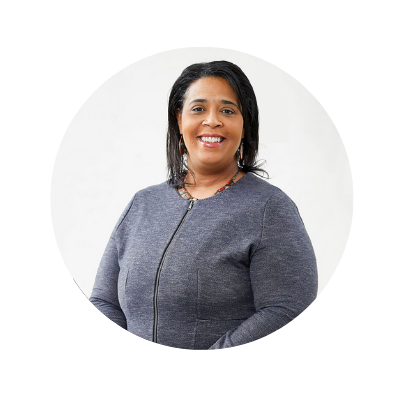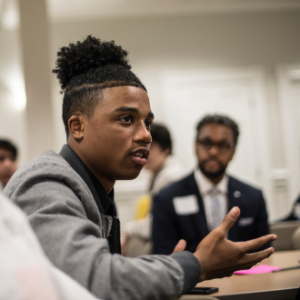The Importance — and Necessity — of Racial Equity in Programming
 When it comes to ensuring that racial equity is embedded in all Big Thought programming, Chief Programs & Systems Officer Erin Offord breaks the process down into three key components: Listen, learn, respond.
When it comes to ensuring that racial equity is embedded in all Big Thought programming, Chief Programs & Systems Officer Erin Offord breaks the process down into three key components: Listen, learn, respond.
It’s a strategy that’s helped Offord, and Big Thought as a whole, design programming that addresses and adapts to the critical, ever-changing issues faced by the communities the nonprofit serves.
Listening allows Big Thought to identify those specific issues, while learning from experts in those spaces and communities provides perspective, knowledge and a frame of reference. And by responding with those first two steps in mind, Big Thought can create programming that meets community needs, drives long-term outcomes and helps youth discover their own greatness.
The push for equity is embodied in programs like The Fellowship Initiative (TFI), a three-year college-readiness program for young men of color that’s put on in partnership with JP Morgan Chase. During those three years, there’s an emphasis not only on academics but also on professional and personal mentorship. These efforts help create the sort of structures and networks that are inherently built into more affluent, typically white communities.
 Seeing TFI’s impact provided an opportunity for Big Thought to learn and shape programming going forward. Three years marked a deeper investment, but to Offord it was also “the right scale” to help the fellows find future success. “TFI has shifted our thinking about race and equity to a lens of true investment,” Offord said. “Our investment has been deep and rich and needed because we’re trying to unravel 400 years of systemic racism.”
Seeing TFI’s impact provided an opportunity for Big Thought to learn and shape programming going forward. Three years marked a deeper investment, but to Offord it was also “the right scale” to help the fellows find future success. “TFI has shifted our thinking about race and equity to a lens of true investment,” Offord said. “Our investment has been deep and rich and needed because we’re trying to unravel 400 years of systemic racism.”
But racial equity isn’t a new priority for Big Thought — it’s been at the heart of 30+ years of programming. There’s always been a focus on understanding and acknowledging under-resourced communities and working to provide resources equitably across those communities.
“Throughout the years, the principles of marginalization, race and equity have been embedded in how we’ve made decisions in both areas [programs and systems] of our work,” Offord said.
More recently, it’s meant refocusing how youth themselves are involved in shaping the programs they’re participating in. “We have always been a youth-facing organization working in educational spaces,” Offord said. “But lately we’ve been intentional in thinking about not just the delivery of what youth want, but also how to empower youth to be at this table and in future power positions to make more equitable, long-lasting change.”
And over the past few years, racial equity has also been built purposefully into Big Thought’s strategic plan. “It’s not as if the need for racial equity is suddenly dropping down from the sky — it’s already there,” Offord said. “The lift, the push, is to name it, and it became clear that we needed to lean in as staff and board leadership.”
It became a chance to respond.
Being more intentional about racial equity’s inclusion in the strategic plan has created a space for openness and transparency between Big Thought’s staff and board, as well as a chance to better understand the communities the organization serves. It also provided the opportunity to name the systemic issues that have led to the marginalization of people of color. “We have to also discuss things like privilege and power constructs that are systemically allowing these marginalizations to continue,” Offord said. “It’s not just about the person of color’s experience with systemic racism.”
Along with paving the way for open dialogue and meaningful change, focusing on racial equity as a strategic goal has made it clear it’s something Big Thought is committed to upholding in all aspects — especially its programming.
Going forward, Offord says, there’s hope to continue programs — like TFI — that offer longer-term investments that can truly change the lives of youth. There’s also the knowledge that the ongoing pandemic has caused learning loss and created additional gaps in underserved communities, leaving more work to be done to achieve equity. To fill those gaps, listening will be the first step — to partners in the community, educational institutions and foundations alike.
Ultimately, Offord points to an overarching question: “What will change the fact that there are marginalized communities?”
The answer, of course, isn’t simple, but Big Thought’s approach to programming offers a good place to start: Listen, learn, respond.